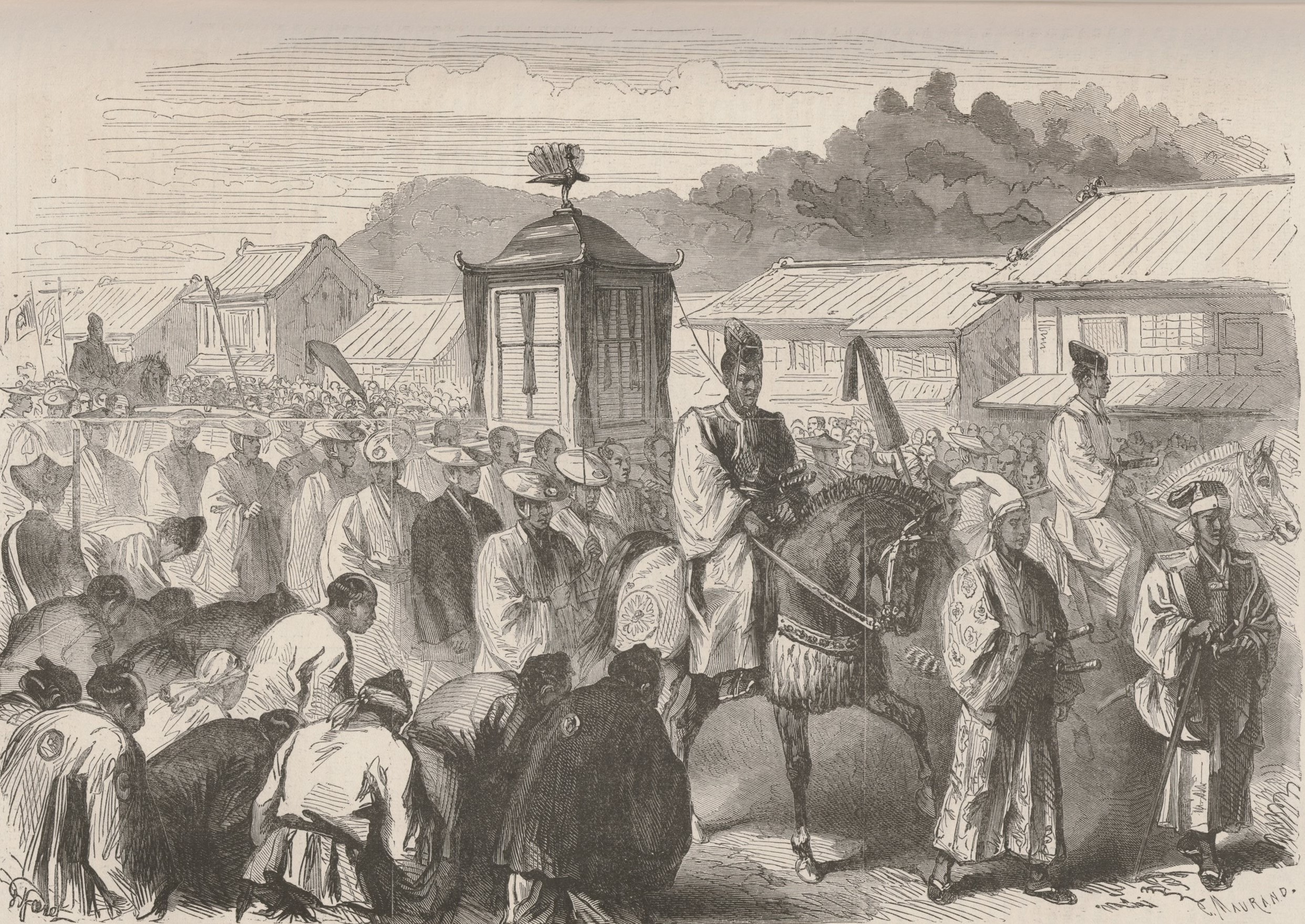|
Ando Jubei
Ando Jubei (1876–1956) was a Japanese cloisonné artist from Nagoya. Along with Hayashi Kodenji, he dominated Nagoya's enameling industry in the late Meiji era. Ando, Namikawa Yasuyuki, and Namikawa Sōsuke are considered the three artists whose technical innovations brought in the "Golden Age for Japanese cloisonné" in the late 19th century. Ando was the Meiji era's most prolific creator of ''presentation wares'': artworks that were commissioned by members of the Imperial Family for presentation to foreign dignitaries. He exhibited at the Japan–British Exhibition of 1910. His work is held in the collections of the Walters Art Museum, the Ashmolean Museum and in the Khalili Collection of Japanese Art The Khalili Collection of Japanese Art is a private collection of decorative art from Meiji-era (1868–1912) Japan, assembled by the British-Iranian scholar, collector and philanthropist Nasser D. Khalili. Its 1,400 art works include metalwor .... The Ando Cloisonné Co ... [...More Info...] [...Related Items...] OR: [Wikipedia] [Google] [Baidu] |
Cloisonné
Cloisonné () is an ancient technique for decorating metalwork objects with colored material held in place or separated by metal strips or wire, normally of gold. In recent centuries, vitreous enamel has been used, but inlays of cut gemstones, glass and other materials were also used during older periods; indeed cloisonné enamel very probably began as an easier imitation of cloisonné work using gems. The resulting objects can also be called cloisonné. The decoration is formed by first adding compartments (''cloisons'' in French) to the metal object by soldering or affixing silver or gold as wires or thin strips placed on their edges. These remain visible in the finished piece, separating the different compartments of the enamel or inlays, which are often of several colors. Cloisonné enamel objects are worked on with enamel powder made into a paste, which then needs to be fired in a kiln. If gemstones or colored glass are used, the pieces need to be cut or ground into the ... [...More Info...] [...Related Items...] OR: [Wikipedia] [Google] [Baidu] |
Nagoya
is the largest city in the Chūbu region, the fourth-most populous city and third most populous urban area in Japan, with a population of 2.3million in 2020. Located on the Pacific coast in central Honshu, it is the capital and the most populous city of Aichi Prefecture, and is one of Japan's major ports along with those of Tokyo, Osaka, Kobe, Yokohama, and Chiba. It is the principal city of the Chūkyō metropolitan area, which is the third-most populous metropolitan area in Japan with a population of 10.11million in 2020. In 1610, the warlord Tokugawa Ieyasu, a retainer of Oda Nobunaga, moved the capital of Owari Province from Kiyosu to Nagoya. This period saw the renovation of Nagoya Castle. The arrival of the 20th century brought a convergence of economic factors that fueled rapid growth in Nagoya, during the Meiji Restoration, and became a major industrial hub for Japan. The traditional manufactures of timepieces, bicycles, and sewing machines were followe ... [...More Info...] [...Related Items...] OR: [Wikipedia] [Google] [Baidu] |
Meiji (era)
The is an era of Japanese history that extended from October 23, 1868 to July 30, 1912. The Meiji era was the first half of the Empire of Japan, when the Japanese people moved from being an isolated feudal society at risk of colonization by Western powers to the new paradigm of a modern, industrialized nation state and emergent great power, influenced by Western scientific, technological, philosophical, political, legal, and aesthetic ideas. As a result of such wholesale adoption of radically different ideas, the changes to Japan were profound, and affected its social structure, internal politics, economy, military, and foreign relations. The period corresponded to the reign of Emperor Meiji. It was preceded by the Keiō era and was succeeded by the Taishō era, upon the accession of Emperor Taishō. The rapid modernization during the Meiji era was not without its opponents, as the rapid changes to society caused many disaffected traditionalists from the former samu ... [...More Info...] [...Related Items...] OR: [Wikipedia] [Google] [Baidu] |
Namikawa Yasuyuki
Namikawa Yasuyuki (1845–1927) — original family name Takaoka — was a Japanese ''cloisonné'' artist. His work was highly sought after in his own lifetime and is held in several collections today. He and Namikawa Sōsuke (no relation)Despite their identical pronunciation, Namikawa Yasuyuki and Namikawa Sōsuke's family names are written differently in Chinese characters. were the most famous ''cloisonné'' artists of the 1890 to 1910 period, known as the "Golden age" of Japanese enamels. From 1875 to 1915, he won prizes at 51 exhibitions, including at world's fairs and at Japan's National Industrial Exhibition.Toyoro Hida, Gregory Irvine, Kana Ooki, Tomoko Hana and Yukari Muro. ''Namikawa Yasuyuki and Japanese Cloisonné The Allure of Meiji Cloisonné: The Aesthetic of Translucent Black'', pp.182-188, The Mainichi Newspapers Co, Ltd, 2017 For his work he was appointed an Imperial Household Artist in 1896. He sometimes signed his pieces Kyoto Namikawa (Namikawa of Kyoto). B ... [...More Info...] [...Related Items...] OR: [Wikipedia] [Google] [Baidu] |
Namikawa Sōsuke
Namikawa Sōsuke (1847–1910) was a Japanese '' cloisonné'' artist, known for innovations that developed ''cloisonné'' enamel into an artistic medium sharing many features with paintings. He and Namikawa Yasuyuki (no relation)Despite their identical pronunciation, Namikawa Yasuyuki and Namikawa Sōsuke's family names are written differently in Chinese characters. were the most famous ''cloisonné'' artists of the 1890 to 1910 period, known as the "golden age" of Japanese enamels. Around 1880 he set up and ran the Tokyo branch of the Nagoya Cloisonné Company. He exhibited his artworks at national and international expositions, where he took an organising role. He was recognised as an Imperial Household Artist and created art works for imperial residences. He sometimes signed his works with the character (pioneer). Biography Japanese ''cloisonné'' traditionally involved opaque blocks of enamel enclosed in brass wire ''cloisons''. In the late 19th century, artists repla ... [...More Info...] [...Related Items...] OR: [Wikipedia] [Google] [Baidu] |
Japan–British Exhibition
The took place at White City, London in Great Britain from 14 May 1910 to 29 October 1910. It was the largest international exposition that the Empire of Japan had ever participated in and was driven by a desire of Japan to develop a more favorable public image in Britain and Europe following the renewal of the Anglo-Japanese Alliance. It was also hoped that the display of manufactured products would lead to increased Japanese trade with Britain. Japan made a successful effort to display its new status as a great power by emphasizing its new role as a colonial power in Asia. Background A proposal was made in 1908 for an Exhibition to be held in London to celebrate and reinforce the Anglo-Japanese Alliance on a grass-roots level. It was strongly supported by Japanese Foreign Minister Jutaro Komura, who was aware that there still was a general conception in the West of Japan as a backward and undeveloped country, despite the Boxer Rebellion and the Russo-Japanese War. The ... [...More Info...] [...Related Items...] OR: [Wikipedia] [Google] [Baidu] |
Khalili Collection Japanese Meiji Art E83
Khalili ( ar, خلیلي) is a common Arabic-based surname, meaning "originating from Al-Khalil also known as Hebron". It is composed of root word Khalil (meaning "companion" or "friend") plus the Arabic suffix "i" meaning "from" or "of". Khalili is also commonly used in Persian, Afghani and other Muslim surnames. Khalili may refer to: Persons Khalili * Abbas Khalili, also known as Abbas al-Khalili (1896–1972), Iraqi-born Iranian diplomat, newspaper publisher *Abdul Khalili (born 1992), full name Abdul Rahman Khalili, Swedish football player of Palestinian origin *Anousheh Khalili (born 1983), Iranian-American singer-songwriter * Aram Khalili (born 1989), Norwegian football player of Iranian Kurdish origin *Fowzieh Khalili (born 1958), Indian female cricketer * Imad Khalili (born 1987), Swedish football player of Palestinian origin * Karim Khalili, Afghani politician, Vice President of Afghanistan * Khalilullah Khalili (1907–1987), alternative spellings Khalilollah, Khalil ... [...More Info...] [...Related Items...] OR: [Wikipedia] [Google] [Baidu] |
Walters Art Museum
The Walters Art Museum, located in Mount Vernon-Belvedere, Baltimore, Maryland, United States, is a public art museum founded and opened in 1934. It holds collections established during the mid-19th century. The museum's collection was amassed substantially by major American art and sculpture collectors, a father and son: William Thompson Walters, (1819–1894), who began collecting when he moved to Paris as a nominal Southern/ Confederate sympathizer at the outbreak of the American Civil War in 1861; and Henry Walters (1848–1931), who refined the collection and made arrangements for the construction of a later landmark building to rehouse it. After allowing the Baltimore public to occasionally view his father's and his growing added collections at his West Mount Vernon Place townhouse/mansion during the late 1800s, he arranged for an elaborate stone palazzo-styled structure built for that purpose in 1905–1909. Located across the back alley, a block south of the Walters man ... [...More Info...] [...Related Items...] OR: [Wikipedia] [Google] [Baidu] |
Ashmolean Museum
The Ashmolean Museum of Art and Archaeology () on Beaumont Street, Oxford, England, is Britain's first public museum. Its first building was erected in 1678–1683 to house the cabinet of curiosities that Elias Ashmole gave to the University of Oxford in 1677. It is also the world's second university museum, after the establishment of the Kunstmuseum Basel in 1661 by the University of Basel. The present building was built between 1841 and 1845. The museum reopened in 2009 after a major redevelopment, and in November 2011, new galleries focusing on Egypt and Nubia were unveiled. In May 2016, the museum also opened redisplayed galleries of 19th-century art. History Broad Street The museum opened on 24 May 1683, with naturalist Robert Plot as the first keeper. The building on Broad Street (later known as the Old Ashmolean) is sometimes attributed to Sir Christopher Wren or Thomas Wood. Elias Ashmole had acquired the collection from the gardeners, travellers, and col ... [...More Info...] [...Related Items...] OR: [Wikipedia] [Google] [Baidu] |
Khalili Collection Of Japanese Art
The Khalili Collection of Japanese Art is a private collection of decorative art from Meiji-era (1868–1912) Japan, assembled by the British-Iranian scholar, collector and philanthropist Nasser D. Khalili. Its 1,400 art works include metalwork, enamels, ceramics, lacquered objects, and textile art, making it comparable only to the collection of the Japanese imperial family in terms of size and quality. The Meiji era was a time when Japan absorbed some Western cultural influences and used international events to promote its art, which became very influential in Europe. Rather than covering the whole range of Meiji-era decorative art, Khalili has focused on objects of the highest technical and artistic quality. Some of the works were made by artists of the imperial court for the Great Exhibitions of the late 19th century. The collection is one of eight assembled, published, and exhibited by Khalili. Although the collection is not on permanent public display, its objects are l ... [...More Info...] [...Related Items...] OR: [Wikipedia] [Google] [Baidu] |
Ando Cloisonné Company
is a Japanese ''cloisonné'' making company located in Sakae, Nagoya, central Japan. History Owari province was one of the foremost production centres of enamel in the country. During the Edo period the Andō family operated a pipe shop called "''Murata-ya''". Andō Jubei (Jusaburo) (1876-1953) was born in Nagoya as the fourth child; he had three elder sisters. His mother died in May 1877 following an illness, and his father followed in September 1877. Orphaned at less than one year old, he was raised according to his father’s will by staff employers. His older sister married Andō Juzaemon, whose born name was Matsukichi. Together with his brother-in-law they made the ''cloisonné'' company a success. In 1893, Andō Juzaemon went to the World's Columbian Exposition in Chicago. It was his first time to travel overseas, and he used the opportunity to study the market. In 1901 Andō Jubei went to the Glasgow International Exhibition, which was his first overseas travel, and ... [...More Info...] [...Related Items...] OR: [Wikipedia] [Google] [Baidu] |










_retouch.jpg)